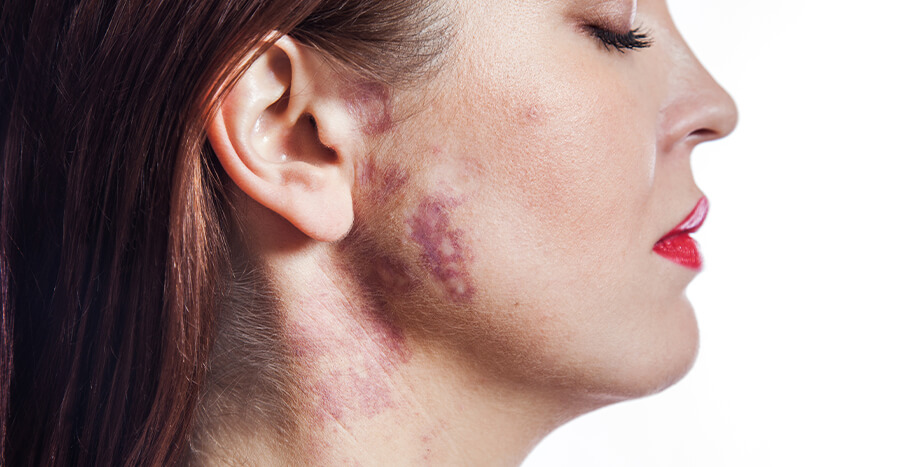There are many types of moles and birthmarks. Most of them are harmless, but it is good to know which ones might put you or your family at risk. Here we have put together a helpful guide that will inform you about what to look for when doing a skin exam.
Moles are small flat or slightly protruding blemishes on the skin that are generally darker than the skin itself. Most adults will have numerous moles on their bodies, and any mole that has been present for a long time without change is generally not worrisome.
A change to a mole or a new mole on the skin of an adult can be one of the early signs of melanoma, a potentially serious type of skin cancer. It is particularly alarming if a mole starts to change shape or color, grow, or bleed. Keep in mind the ABCDEs of Melanoma to determine if you should be worried about any of your new moles:
A- Asymmetry – the sides of the mole appear different
B- Border- irregular or poorly defined edges or borders
C- Color- different colors in the same mole
D- Diameter – the diameter is greater than the size of a pencil eraser (6mm)
E- Evolving- changing in size or color
Board certified dermatologists such as those at Dermatology Center of Acadiana are very good at evaluating a mole by sight to determine if it is a cancer risk or not. Most non cancerous moles are harmless, but in some cases it may be appropriate to remove a mole. Usually this is because the mole is in an awkward place for functional reasons (rubs against clothing) or if there is a possibility it might be skin cancer.
If the mole is concerning for skin cancer it will be removed and sent in for a biopsy to find out if it is benign, atypical or malignant. If an atypical mole grows back after removal make sure to go back to your dermatologist, it could be a sign of skin cancer.

There are a few birthmarks that are worth taking note of that might warrant a visit to the dermatologist:
Congenital nevus- a dark colored mole that usually covers a large area, ranging from a few millimeters to multiple centimeters. Children with large birthmarks of this type can be at increased risk of skin cancer when they get older.
Port wine stain- This is a pinkish to reddish area of discoloration on the skin that is commonly on the face. They tend to thicken and develop an irregular, rough surface with time
Infantile Hemangiomas- These are protrusions of the skin that are normally red, blue or pinkish in color. They tend to start flat, grow larger and then recede over time. They are usually gone by the age of 10. In some cases when a child has multiple or when they are in a problematic area they can be evaluated and treated if necessary. The main reasons for treatment are if a hemangioma is near the eyes, nose, or mouth, if they are particularly large, or if it has become an open wound.
Sometimes people end up with birthmarks in places that are cosmetically concerning. If you happen to have an birthmark that you would potentially like removed, make an appointment with your dermatologist at Dermatology Center of Acadiana. We would be happy to talk to you about the possibilities.